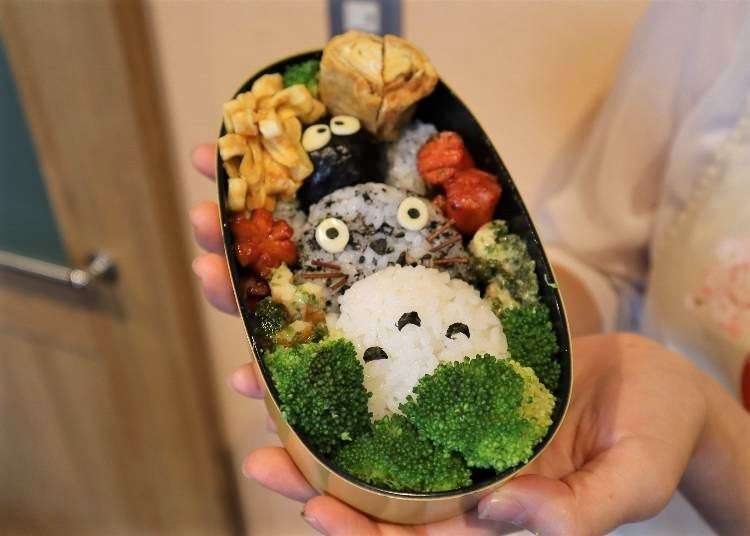
Japan’s home-packed meal, the Japanese bento, is well-known around the world as part of the country’s traditional culture. Recently, a type of bento has been gaining attention on social media platforms including Instagram.
The ‘character bento,’ also known as kyaraben for short, features characters from Japanese anime and manga and is popular even overseas. Because of this, I have invited a visitor to Japan to try her hand at making kyaraben for the first time at a cooking class!
- Table of Contents
-
- WASHOCOOK - A Japanese Cooking Class That Visitors to Japan Can Participate In
- Taking on the Japanese Bento Box Challenge Today is Ms. Ah-Yeong!
- Today’s Kyaraben Theme is “Totoro!”
- Making Japanese Bento Box: Let’s Start the Lesson Right Away!
- The Key Feature of a Kyaraben is Cute Presentation - Plus Taste!
- Finally, It’s Time to Take on the Challenge of Making a Totoro Kyaraben!
- And Finally, the Totoro Kyaraben is Complete!
- Some Concluding Thoughts on Making a Kyaraben For the First Time
- Try Making Your Own Kyaraben in Japan at a Cooking Class!
- Related Links and Articles
WASHOCOOK - A Japanese Cooking Class That Visitors to Japan Can Participate In
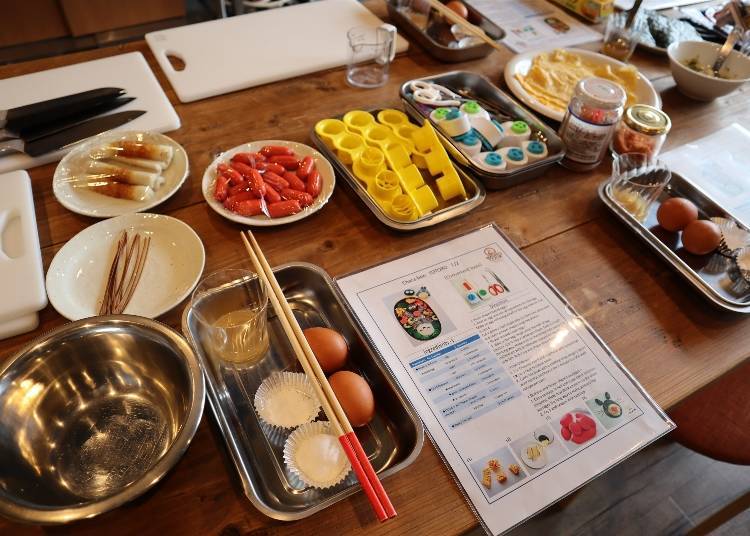
In order to make kyaraben, our participant is taking part in WASHOCOOK, a Japanese culinary school aimed at foreign visitors to Japan.
It organizes various classes focusing on homemade Japanese dishes, covering a wide range from everyday homecooked food that would remind you of a ‘mom’s cooking’ to dishes for special occasions, like osechi, which are a traditional food for New Year’s Day in Japan, as well as chirashizushi, a type of scattered sushi dish eaten on happy occasions.
This casual culinary school was established two years ago and has welcomed many foreigners, both tourists, and residents in Japan, as its participants since then.
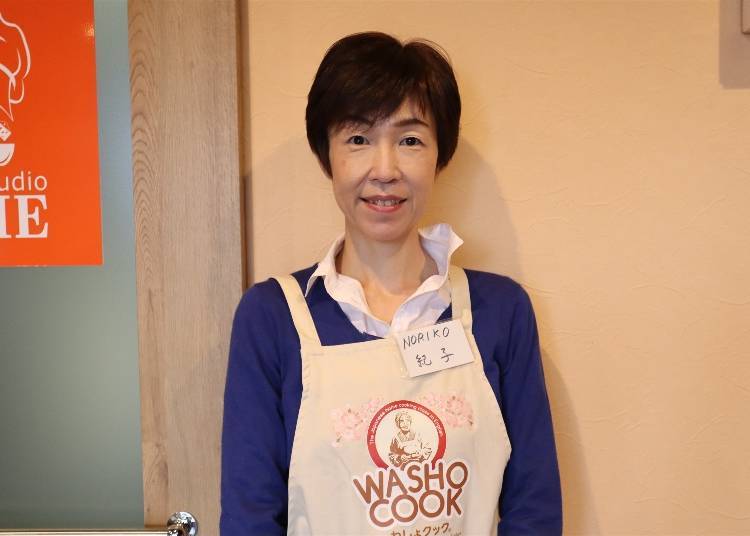
“When I visited New Zealand, I had the opportunity to try out the homecooked food there and was really touched by the kindness and how delicious the food was. Because of that, I established WASHOCOOK so I could spread Japanese cuisine to foreigners in Japan,” founder Tominaga Noriko explained. She wanted to share the same warmth and tastiness that she had experienced through Japanese cuisine.
Taking on the Japanese Bento Box Challenge Today is Ms. Ah-Yeong!
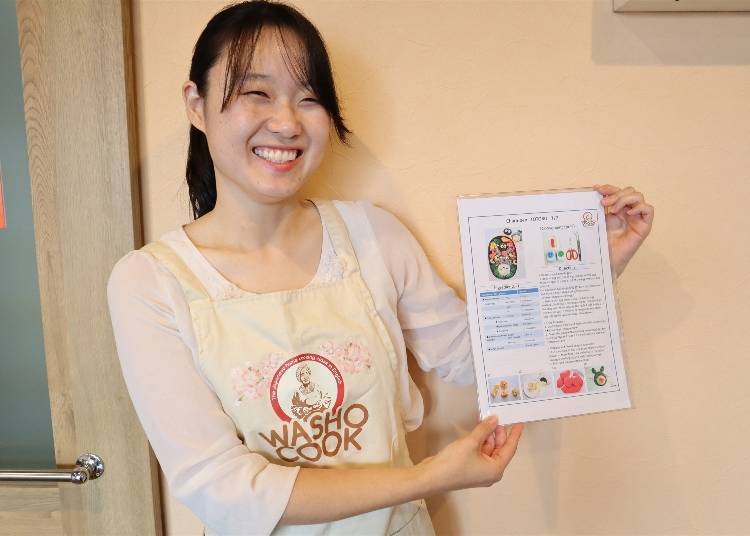
Ms. Ah-Yeong will be taking on the challenge and making a kyaraben for the first time. She shares enthusiastically: “It’s my first time making kyaraben! I do make the typical kind of bento, but not the elaborate kinds. I’m not sure if I’ll be able to do it well but I’m really looking forward to it!”
By the way, the illustration on the WASHOCOOK apron Ms. Ah-Yeong is wearing is modeled after Ms. Tominaga’s mother-in-law! This detail precisely captures the cooking school’s emphasis on the taste of a mom’s cooking.
Today’s Kyaraben Theme is “Totoro!”
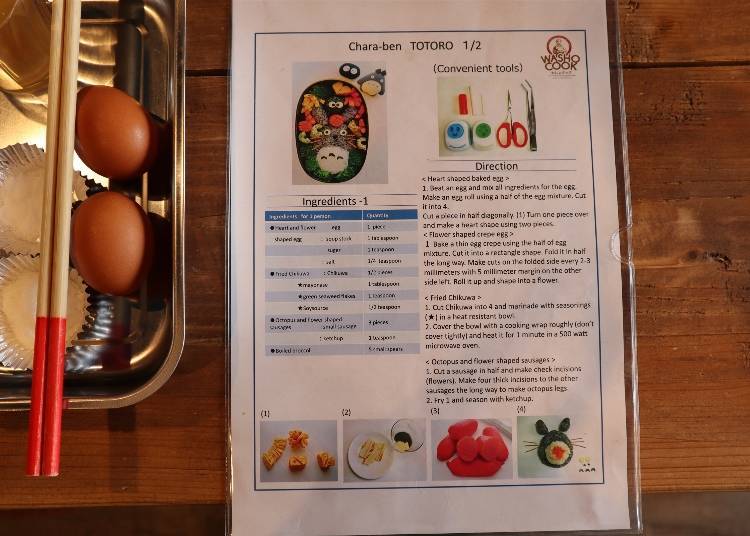
The character featured in today’s bento is Totoro, the titular character of the famous Studio Ghibli animation film My Neighbour Totoro. The recipe is provided in English and the lesson is conducted in English as well.

The three teachers for today are Keiko-sensei, Noriko-sensei and Kuniko-sensei.
Making Japanese Bento Box: Let’s Start the Lesson Right Away!
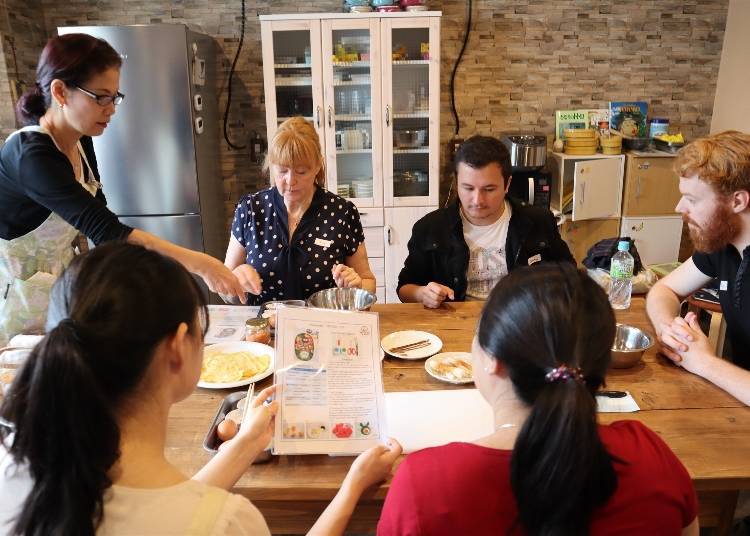
Today, Jeremy and Micheline, who are on a trip to Japan from France, are also participating in the class with their family. The participants are first briefed on the process before they start work on making their kyaraben.

The first step is to make a heart-shaped tamagoyaki (omelet). Break the egg and add in some seasoning.

Everyone seems to be enjoying their first time making kyaraben. My Neighbour Totoro is also well-known in France, so the other participants are familiar with the character.
“In France, there isn’t a culture of making home-packed meals. Even students just bring some sandwiches for lunch. Making a kyaraben seemed fun and that’s why I really wanted to try it. I was really interested since this is an experience I can’t get outside Japan,” one of the participants had commented.
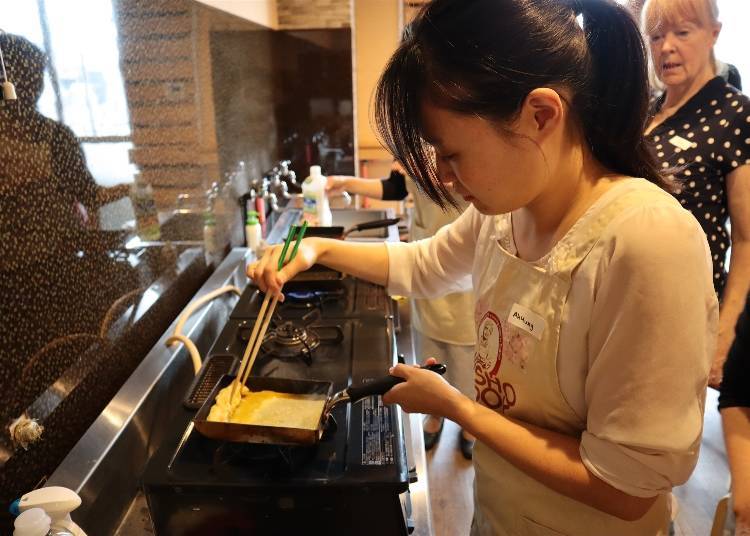
Fry the beaten eggs in the special pan for tamagoyaki. “Ms. Ah-Yeong, you’re really skillful!” One of the teachers praised. As expected, Ms. Ah-Yeong’s technique is great because she has experience preparing bento on a regular basis!
“I have this frying pan too, and it’s really convenient! But I don’t use it to make tamagoyaki. So, this is difficult because I don’t usually use so much precision! (laughs)”
Although this frying pan is marketed as a special pan for tamagoyaki, Ms. Ah-Yeong raves about it being extremely convenient for cooking other ingredients too.

Two other participants, who are making tamagoyaki and using the special frying pan for the first time, are fully supported and guided by the teachers every step of the way.
The Key Feature of a Kyaraben is Cute Presentation - Plus Taste!
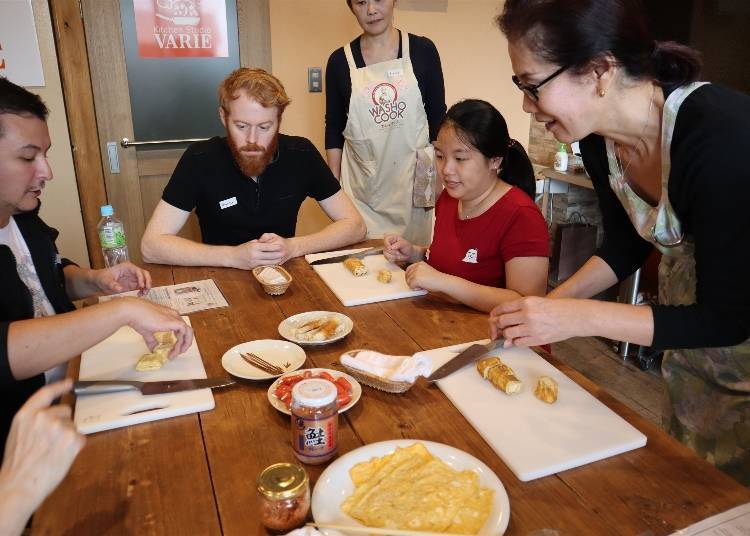
Once the tamagoyaki is done, cut it into smaller pieces. Of course, it goes without saying that a kyaraben has to taste good, but decorating it is equally important too. So, we will cut the tamagoyaki into heart shapes!

The next step is to shape thin slices of tamagoyaki into flowers.
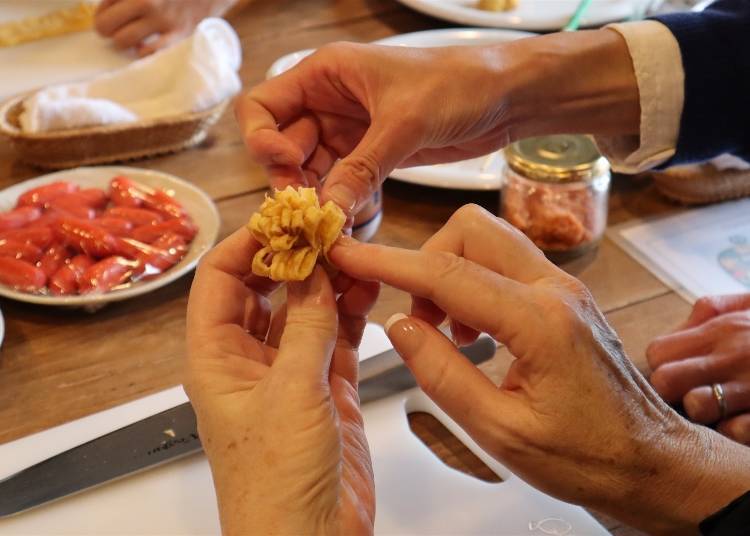
Make fine cuts on one side and carefully roll the tamagoyaki along the edge.

And there you have it! Thin egg omelettes shaped like beautiful flower petals. As for the heart shapes, cut the tamagoyaki into bite-sized pieces before slicing each piece diagonally. If you turn over one half, it should form a heart shape.

The next thing is to prepare sausages – a must-have side dish in every bento!
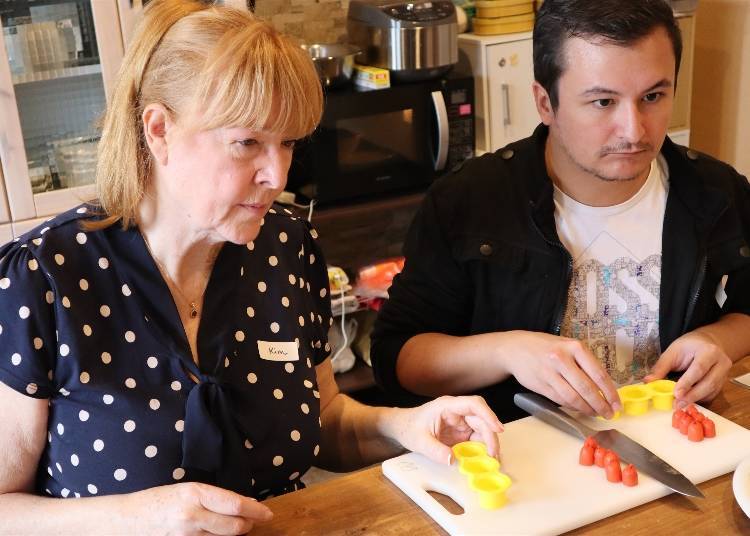
Although the sausages are typically shaped like an octopus, here, the participants will make flower-shaped sausages instead, using cutters available at 100-yen shops.
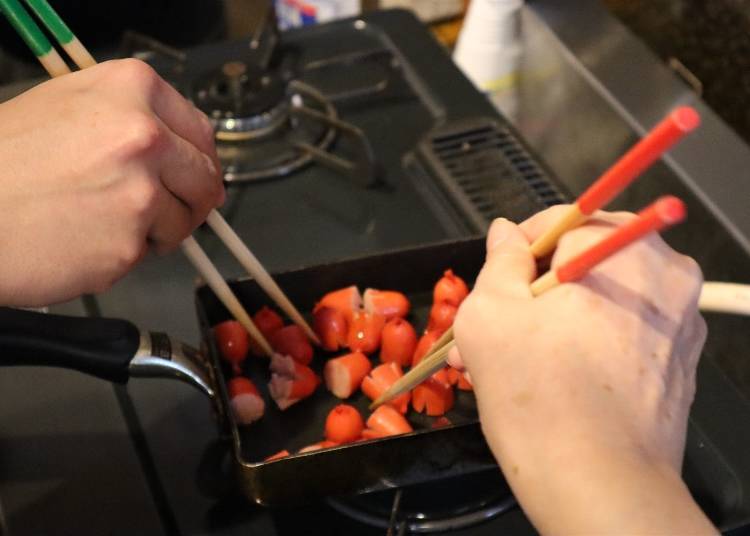
As you fry the sausages, the cut areas expand outwards gradually, forming the shape of a blooming flower.

Mix in some ketchup, and it is done!

Next, the participants prepare chikuwa, a Japanese fish cake, with seaweed. The recipe is simple – just add a mixture of condiments to bite-sized chikuwa and sea lettuce, before heating it all up in the microwave oven.

This is the completed product! Everyone was very curious about the sea lettuce, asking questions about what it was and where it was sold at.
Finally, It’s Time to Take on the Challenge of Making a Totoro Kyaraben!
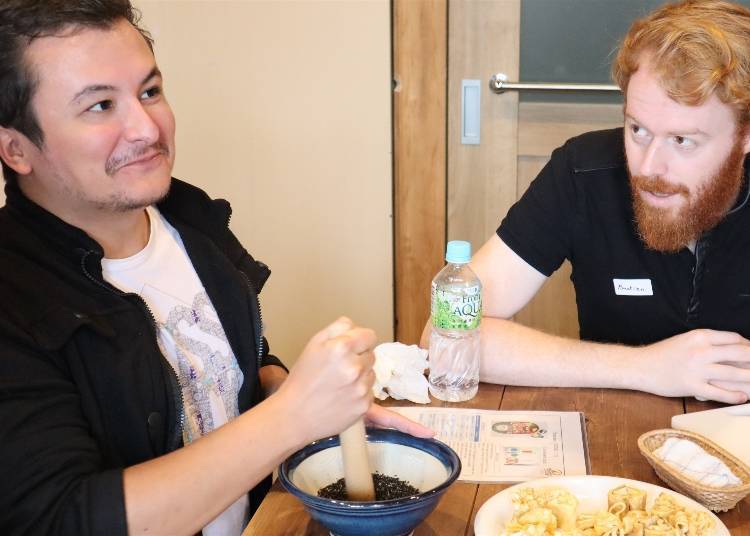
And finally, it’s time to start working on making the Totoro shape for the kyaraben. First, grind some sesame seeds and mix it with rice to create a gray color for Totoro’s body.
“This fragrance is awesome. I love sesame!” The participants from France exclaimed. Ms. Tominaga chimed in, “Foreigners really like sesame. It seems that the fragrance really appeals to them.”
Because of its strong flavor, I did not think that everyone would be fans of sesame, but this completely defied my expectations. Plus, these participants did a lot of research to find out which shops they could buy sesame from as souvenirs.

Mix the fragrant sesame seeds and some salt with freshly cooked rice.

Using some cling wrap, shape the light gray rice mixture into Totoro’s head.
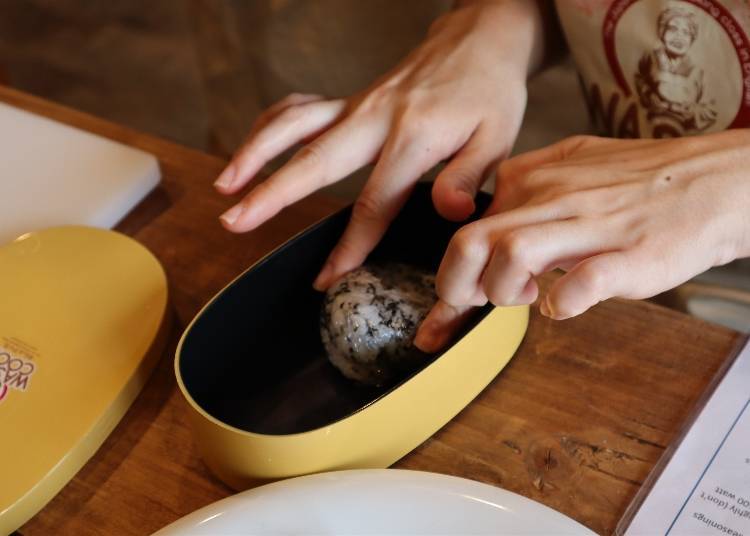
Pack it into the bento box.

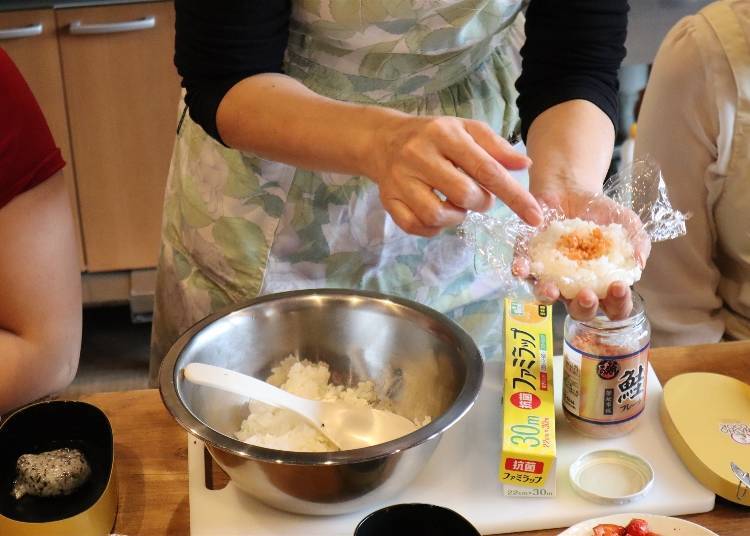
Now we will make Totoro’s tummy. Shape some white rice into a ball while adding salmon flakes as a filling. These should go in the middle and remain hidden when your rice ball is completed.

When that is done, your kyaraben should look something like this! The shape of Totoro is gradually coming together. Using rice that has already been mixed with sesame seeds, create a pair of ears. “Doesn’t this look kind of like a rabbit...?” Ms. Ah-Yeong asks. Not to worry, because we are going to start fixing it up!

Next up is the Makkuro-Kurosuke, the soot sprites that also appear in the film. Wrap seaweed around some rice firmly to form a black ball.


We are gradually getting there. Use a cutter mold to cut some small circles from sliced cheese. With the help of a pair of tweezers, arrange the round pieces of cheese such that they form the whites of both Totoro and the Makkuro-Kurosuke’s eyes.
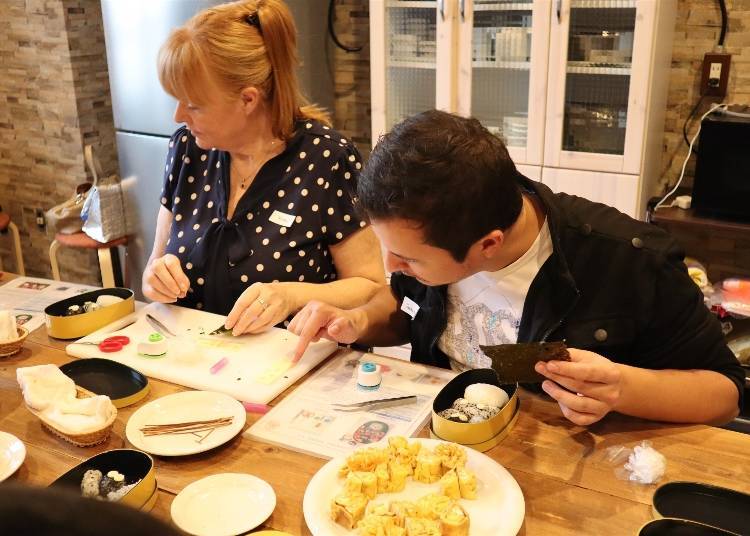
Next, cut some small circles and crescent shapes from the seaweed pieces using a cutter as well. These shapes will help to complete the eyes as well as form the designs on Totoro’s body.

Just by adding the circular seaweed, the bento is taking shape!
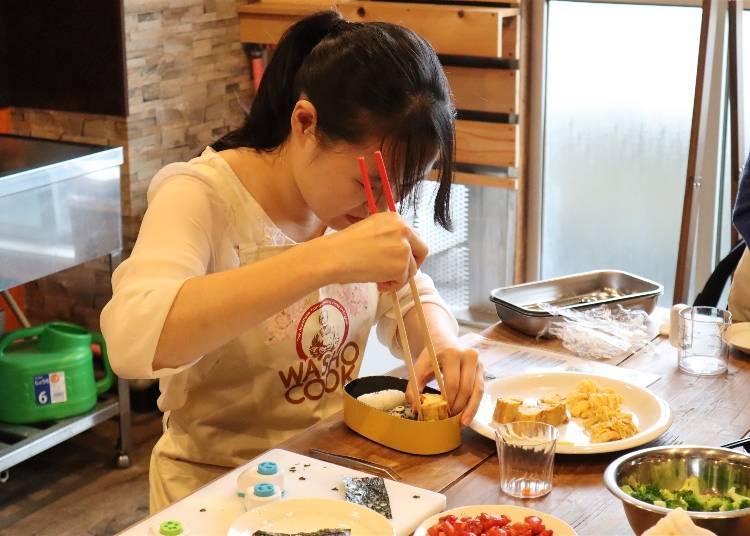
We have finally reached the last stage of completing the kyaraben, where we will have to finish up arranging the food in the box. Everyone is adding the side dishes, including the tamagoyaki and sausages, into their kyaraben while referring to a picture of the final product.

Everyone is putting all their concentration into this last step!

Ms. Ah-Yeong, too, is going about completing her kyaraben.
And Finally, the Totoro Kyaraben is Complete!
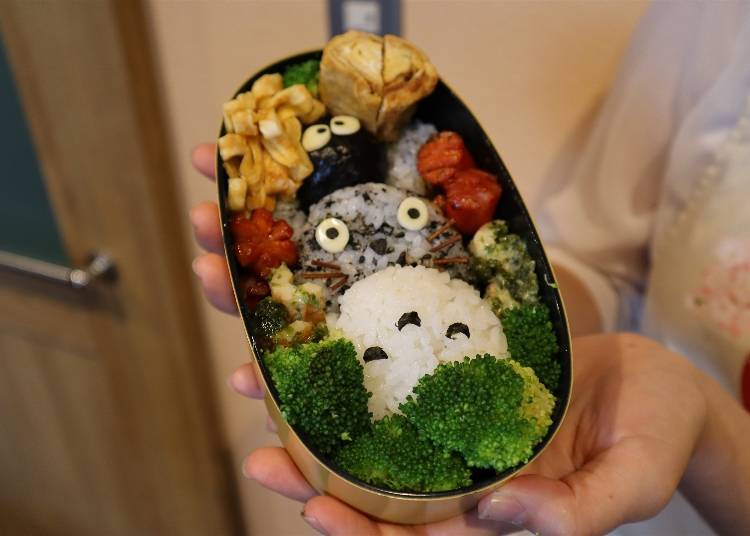
And it’s finally done! What do you think of it? Even though this is Ms. Ah-Yeong’s first time making a kyaraben, it looks great, doesn’t it? The kyaraben turned out to be extremely colorful and aesthetically pleasing!

The other participants’ kyaraben looked amazing too! Totoro’s expression varies slightly in everyone’s kyaraben, but that is what makes each kyaraben unique!

At the end, everyone got to do a taste test of the kyaraben they made. “The tamagoyaki tastes great!” “The broccoli is boiled perfectly!” were among some of the comments the participants made. No doubt, the bento tastes especially delicious because they made it for themselves!

Ms. Ah-Yeong finished her meal in the blink of an eye and said, “It was so delicious~ My favorite might be the chikuwa! It’s simple to make so I think I will try making it myself!”

We end the lesson with a commemorative photo of the participants and teachers. Everyone seems happy and satisfied with today’s class, from the making of kyaraben to the taste-testing segment!
Some Concluding Thoughts on Making a Kyaraben For the First Time
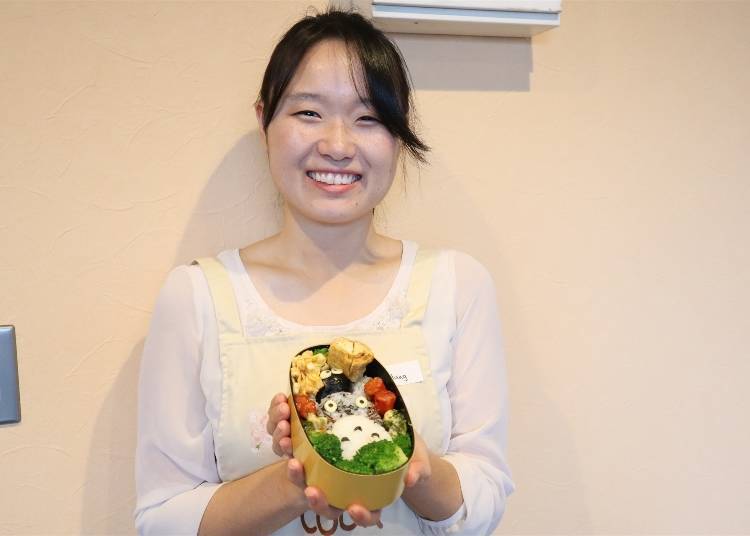
“Although this is my first time making kyaraben, I found it to be easy because of all the guidance I got from the teachers! I faced some difficulty trying to get the balance right when I packed the dishes into the box, but it was really fun. Making this as packed lunch for children every day, however, is too much. It’s just impossible for me,” Ms. Ah-Yeong laughs.
I think there is only a small proportion of parents who make kyaraben on a daily basis but even those who prepare kyaraben once in a while are admirable too, considering how much work it takes!
Try Making Your Own Kyaraben in Japan at a Cooking Class!
If you would like to learn how to prepare homemade Japanese cuisine like kyaraben, WASHOCOOK is a great place to start since the lessons are conducted in English. This will be a unique experience you cannot get outside Japan, so why not try it out?
-
WASHOCOOKわしょクック
- Address Address (Yotsuya Classroom): Soushin Bldg., 6F, 2-2 Yotsuya, Shinjuku-ku, Tōkyō-to, 160-0004, Japan
-
Nearest Station
Nearest Station: 8-min walk from JR Yotsuya Station on the Chūō Line and Sōbu Line
- Phone Number 090-1849-7240
Please refer to this site for more information about the lesson schedules and venues: https://washocook.com/
Related Links and Articles
*Prices and options mentioned are subject to change.
*Unless stated otherwise, all prices include tax.
Popular Tours & Activitiess
Recommended places for you
-
Ad

A Tokyo Souvenir with Soul: The Handcrafted Leather of Bunkoya Oozeki
-

Autumn in Japan 2025: Fall Foliage Forecast & Where to Enjoy the Colorful Leaves (+Tour Info)
-

Akihabara Electronics: 7 Essential Stores in Tokyo for Tax-Free Deals & Unique Finds
by: Ran Tanaka
-

'Unbelievable...!' 4 Weird Things About Japanese Bath Culture That Shocked Foreign Visitors!
-

Best Things to Do and See Around Tokyo in September: Events and Festivals in Kanto
-

Where to Buy Electronics in Ikebukuro: 6 Tax-Free Shops for Tourists in Tokyo
by: Ran Tanaka
Inspiration for Accommodations
-

Enjoy Mt. Fuji from the Comfort of Your Room! Recommended Ryokan with Mt. Fuji View
-

Stay Near the Cherry Blossoms! Hotels for Cherry Blossom Viewing in Tokyo
-

Family-Friendly Hotels with Free Shuttle to Disneyland: Convenient Access for a Magical Stay
-

Top Ranked Hakone Hotels with Mt. Fuji View: Enjoy Stunning Scenery from Your Private Space
-

Convenient Tokyo Hotels with Airport Shuttle: Ideal for Families and Heavy Luggage
-

Stunning Tokyo Tower View Hotels: Enjoy Spectacular Scenery from Your Private Space
-

Convenient Asakusa Hotels with Kitchens: Ideal for Extended Family Visits
-

Experience Luxury: Hakone's 10 Best Five-Star Accommodations
-

Enjoy Mt. Fuji Autumn Leaves! Top Hotels Near the Popular Autumn Leaves Corridor
-

Experience Hakone Fall Foliage from Your Room with Stunning Views
-

6 Surprisingly Cheap Things in Japan
-

Meiji Shrine (Meiji Jingu): Exploring the Sacred Sanctuary of Peace in Bustling Tokyo
-

Exploring Tokyo: 4 Must-Visit Spots around Tokyo Station
-

[MOVIE] Alice in a Labyrinth: Fantasy Dining in Ginza
by: Holly Neslusan
-

30 Cool & Quirky Things to Do in Shibuya, Tokyo’s Iconic Neighborhood
-

What Japanese Really Get At The Supermarket: Japan’s Top 10 Quirky Local Drinks!
- #best ramen tokyo
- #what to buy in ameyoko
- #what to bring to japan
- #new years in tokyo
- #best izakaya shinjuku
- #things to do tokyo
- #japanese nail trends
- #what to do in odaiba
- #onsen tattoo friendly tokyo
- #daiso
- #best sushi ginza
- #japanese convenience store snacks
- #best yakiniku shibuya
- #japanese fashion culture
- #best japanese soft drinks


















